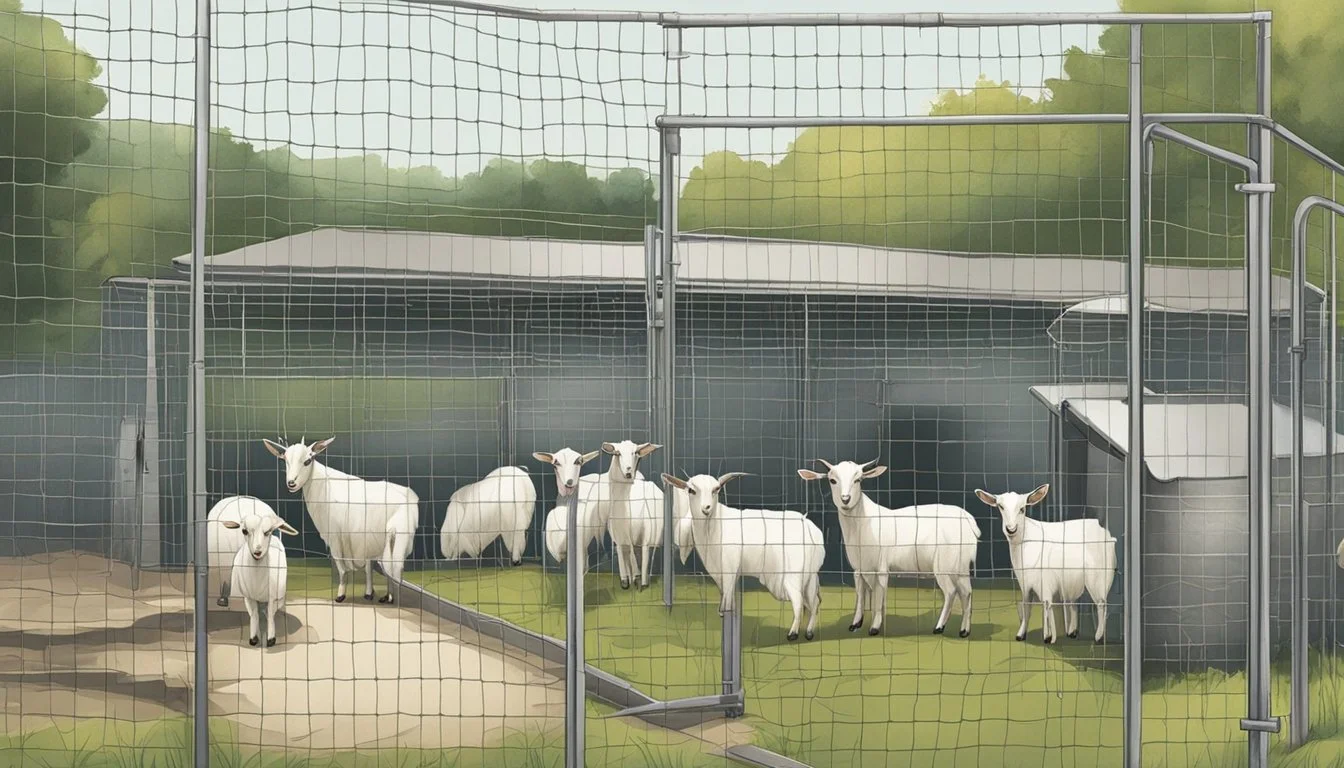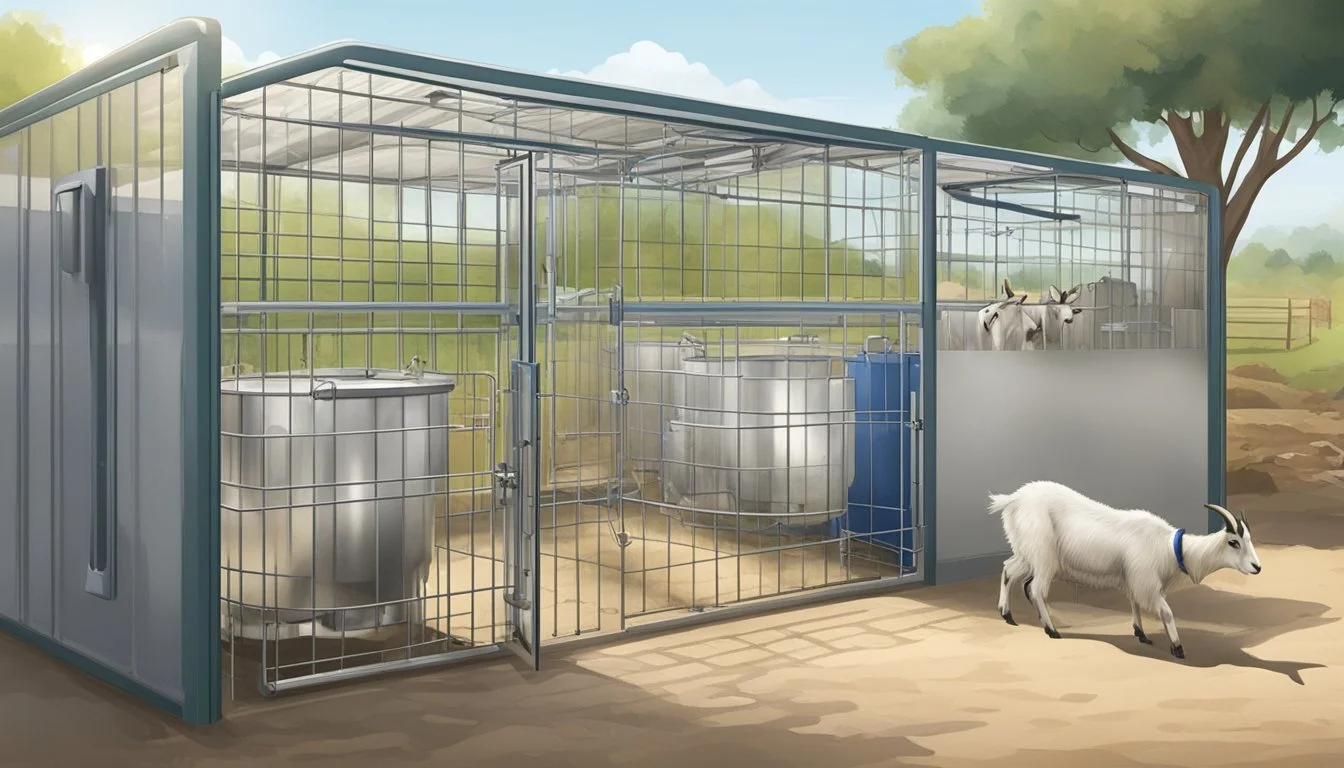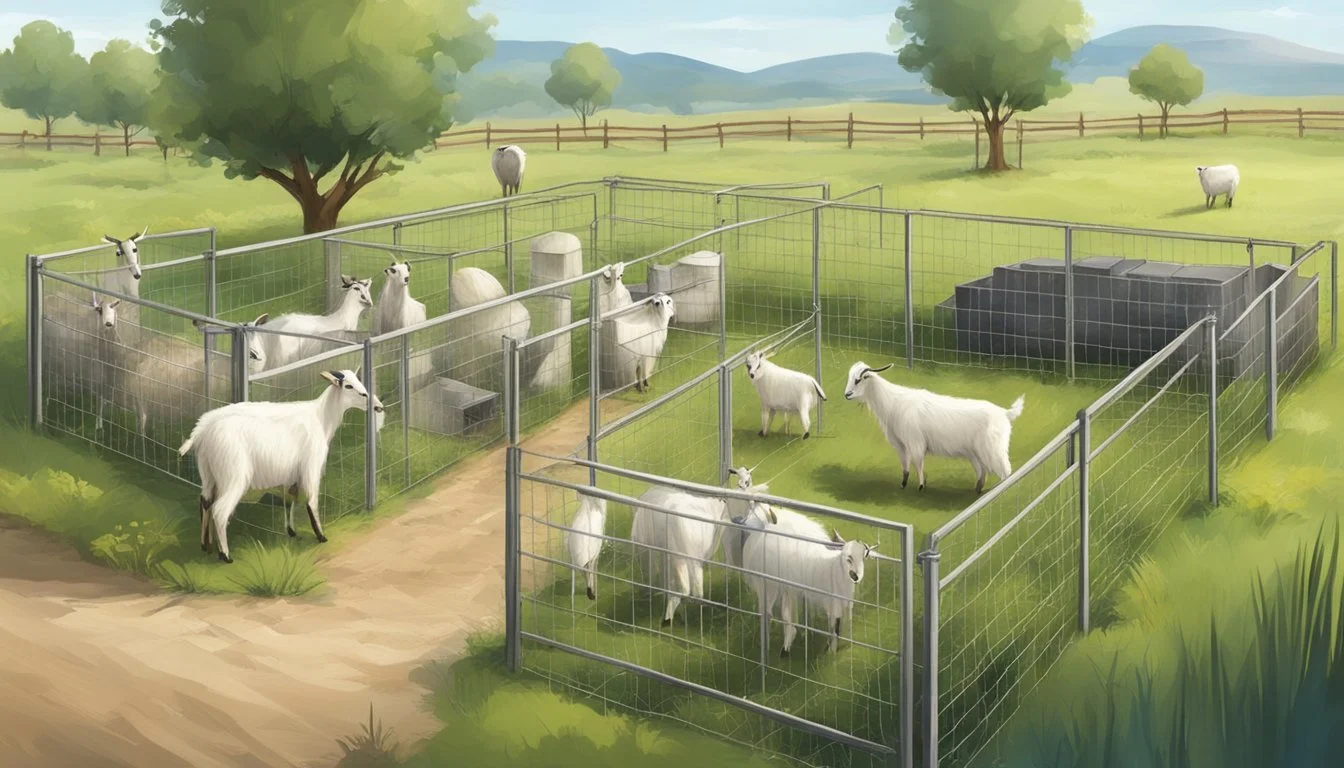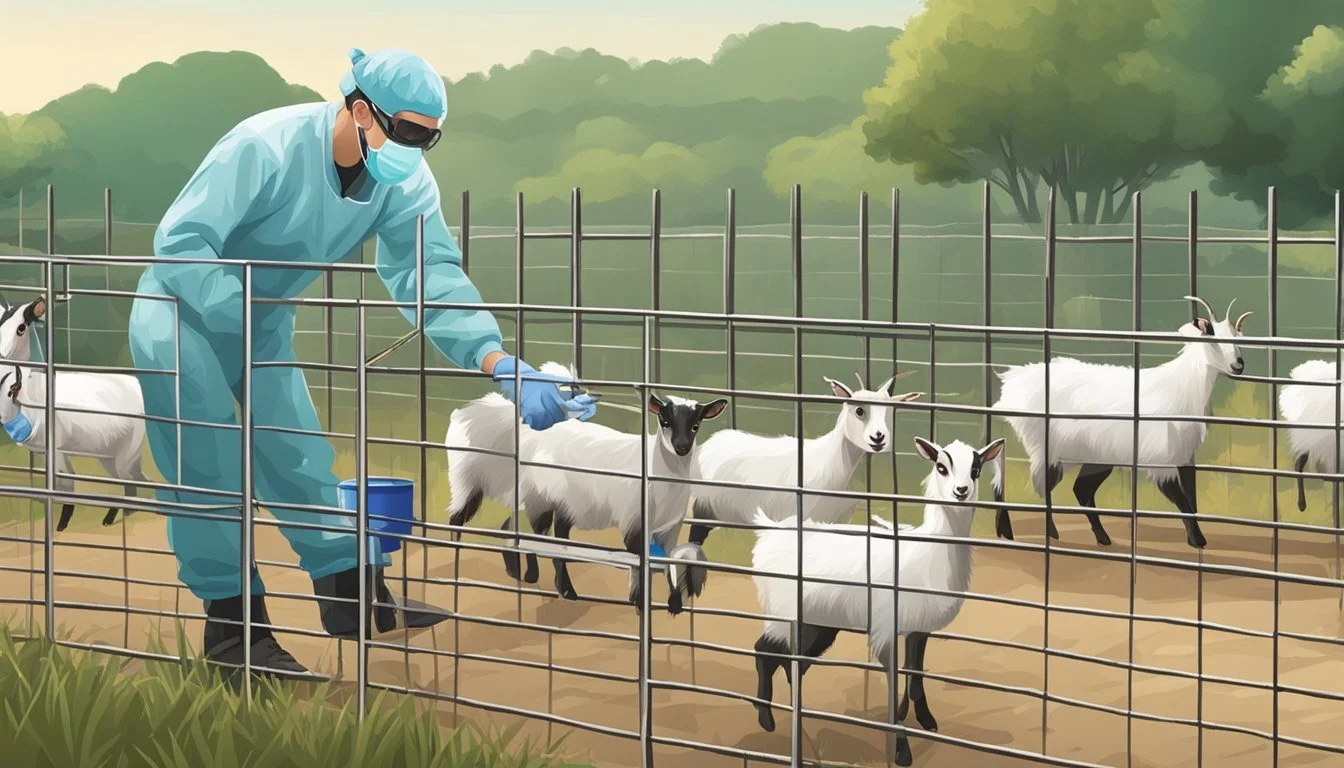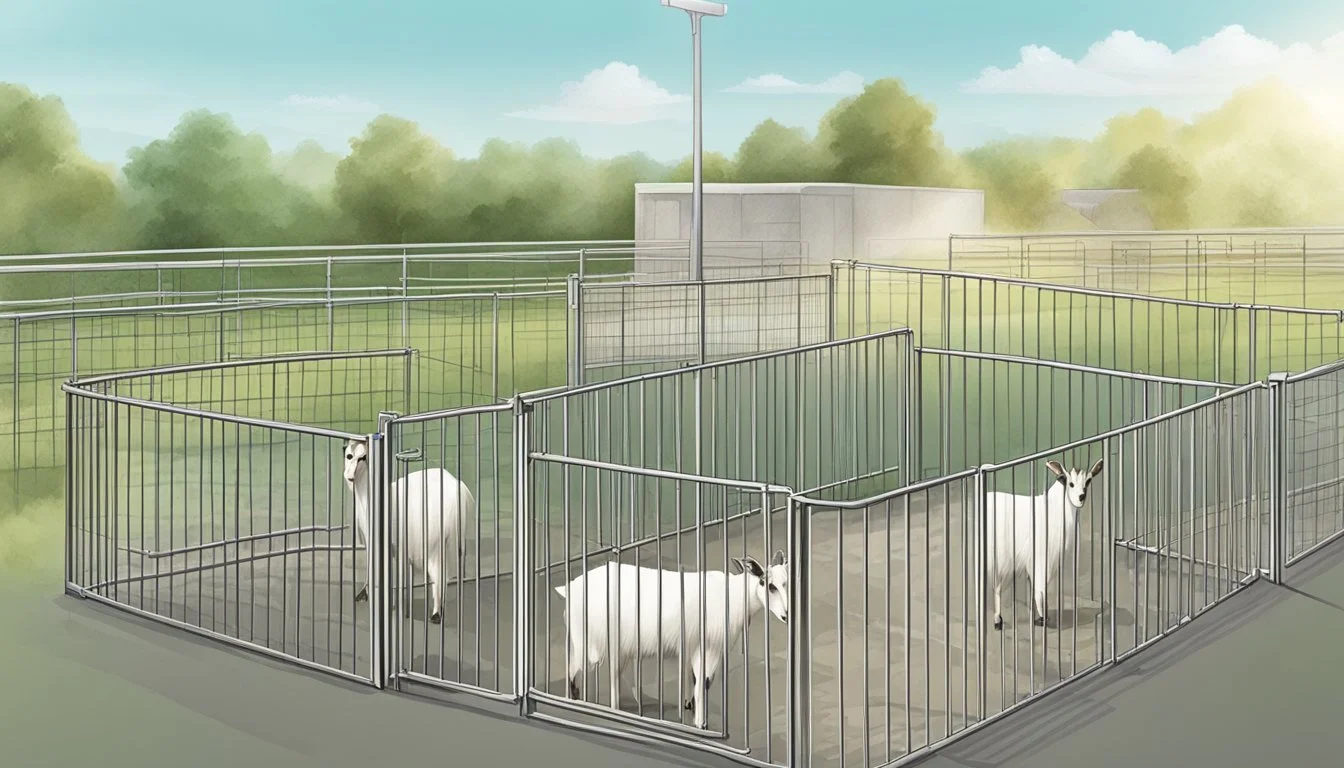What Are the Best Practices for Biosecurity with a Small Goat Herd
Essential Guidelines for Health Management
Biosecurity is a critical component in managing a small goat herd. Implementing best practices for biosecurity significantly reduces the risk of infectious diseases being introduced and spread within a herd. Small-scale goat producers must focus on creating a set of protocols that aim to maintain the health and well-being of their animals. Keeping the herd free from diseases like caseous lymphadenitis (CL), caprine arthritis encephalitis (CAE), and other pathogens is essential not only for animal welfare but also for the economic stability of the farming operation.
Effective biosecurity management encompasses a range of measures. They start from the most basic steps like restricting visitor access to the herd and maintaining clean feeding and watering equipment. More comprehensive strategies involve regular health checks, vaccinations, quarantine procedures for new or returning animals, and prompt isolation of sick goats to prevent transmission. It is also vital to educate everyone involved in the farm operations about the importance of hygiene and the potential risks of disease transmission.
Ultimately, a successful biosecurity plan revolves around vigilance and commitment. It is important for producers to stay informed on the latest recommendations and tailor their biosecurity practices to their specific farm needs. Adopting a proactive approach to biosecurity management ensures a thriving and productive herd, supporting the overarching goal of sustainable farming.
Understanding Biosecurity
Biosecurity is a strategic and integrated approach to managing risks posed by diseases to animals, humans, and the economy. It encompasses a range of practices that aim to prevent, control, and mitigate the spread of diseases, especially zoonotic diseases that can transfer between animals and humans.
Fundamentals of Biosecurity
Biosecurity rests on the concept that preventing diseases is more effective and less costly than treating them. Key principles include quarantining new animals before integrating them into the herd, sanitizing equipment, and controlling access to livestock areas. Training in effective biosecurity measures is essential to ensure all individuals involved understand and implement the necessary protocols. Literature reviews consistently support these practices as the cornerstone for reducing disease susceptibility in livestock operations.
Biosecurity Plan Development
Developing a biosecurity plan involves a situation-specific analysis and an understanding of the particular threats faced. The plan should document procedures for disease prevention and outline clear steps for rapid disease control in the event of an outbreak. Effective biosecurity plans also include regular public health monitoring to detect and address any emerging threats of disease transmission immediately.
Common Biosecurity Threats
Small goat herds are susceptible to a range of biosecurity threats, including viral, bacterial, and parasitic diseases. Zoonoses—diseases that can spread from animals to humans—are of particular concern due to their potential impact on public health. Practices such as minimizing visitor access and controlling vermin can help mitigate the transmission of diseases. Regular review of these risks as part of a farm's biosecurity strategy is essential for maintaining herd and human health.
Herd Management Practices
Effective biosecurity within a small goat herd relies heavily on comprehensive herd management practices. Prioritizing animal health through vigilant monitoring, and implementing strict vaccination and quarantine procedures, are key in preventing disease outbreaks. Likewise, the integration and management of both new and existing animals are vital to maintaining a healthy herd.
Herd Health Monitoring
Regularly monitoring the health status of each goat is essential. Farmers should conduct daily observations for signs of illness, such as changes in appetite, behavior, or milk production. It's also important to maintain detailed health records for each animal. For herds of any size, this proactive approach can quickly identify and manage potential health issues before they escalate.
Vaccination and Quarantine Procedures
Adhering to a stringent vaccination schedule is one of the most effective management practices in disease prevention. All goats should be vaccinated against common contagious diseases to maintain herd immunity. Newly acquired or sick animals should be quarantined for a suitable period, typically no less than 30 days, to prevent the introduction of new diseases to the herd.
Managing New and Existing Animals
When introducing new animals, verify their health status and vaccination history. They should be similar in health to your existing herd to avoid introducing pathogens. Regularly assess the overall herd composition, ensuring that herd size remains manageable and compatible with available resources, thus mitigating stress and competition, which can lead to health issues.
Farm Infrastructure & Equipment
Effective biosecurity depends significantly on the strategic design of farm infrastructure and the meticulous upkeep of equipment. Properly planned facilities and rigorous cleaning protocols are essential in minimizing disease spread among livestock.
Design and Layout for Disease Control
The design and layout of a small goat herd's housing can greatly influence disease control outcomes. Facilities should be structured to separate different age groups and health statuses, incorporating quarantine zones for new or sick animals to prevent disease transmission. For example, footbaths at entry points can reduce the introduction of pathogens. Enclosures must allow for good air circulation, reducing humidity and moisture that can harbor disease. Walkways should be designed to minimize cross-traffic between clean and potentially contaminated areas.
Cleaning and Disinfecting Equipment
Regular cleaning and disinfection of equipment are crucial to biosecurity. All tools and machinery in contact with the goat herd should be thoroughly sanitized before and after use. This includes feed troughs, water containers, and milking equipment which can be hotspots for microorganisms. The use of appropriate detergents and disinfectant solutions is key; they should be applied according to manufacturer instructions for effective results. Clean and disinfect protocols ought to extend to vehicles and trailers that transport goats, ensuring that these are free from contaminants when entering the farm perimeter.
Hygiene & Personnel Management
Implementing stringent hygiene and personnel management practices is critical in maintaining the biosecurity of a small goat herd. These measures help in reducing the risk of disease transmission by ensuring that everyone who comes into contact with the animals is aware of and adheres to specific sanitary protocols.
Personal Protective Equipment (PPE)
PPE is essential in preventing the spread of pathogens. Employees should be provided with:
Clothing: Dedicated overalls or coveralls that are to be worn only on the farm.
Boots: Disinfectable rubber boots that should not leave the premises.
Gloves: Disposable gloves, especially when handling sick animals or birthing materials.
These items must be used consistently and correctly to act as a barrier between humans and goats, minimizing the opportunity for diseases to transfer.
Employee Biosecurity Training
Comprehensive biosecurity training for all employees is vital. Training should cover:
Proper use of PPE, emphasizing the importance of wearing and disposing of it correctly.
Recognition of signs of disease in goats to enable early reporting to management.
Understanding how diseases are spread including direct contact with goats or indirect contact through contaminated gear or equipment.
Consistent reinforcement of training and protocols ensures that employees remain a key asset in safeguarding the herd's health.
Livestock Interaction and Wildlife Control
Effective biosecurity practices are essential in managing small goat herds, particularly in controlling the interactions between goats, other domestic animals, and wildlife. These practices are important for preventing the transmission of diseases and protecting herd health.
Livestock and Companion Animals
Companion animals such as dogs and cats often have access to livestock areas and can carry pathogens. Regular veterinary check-ups and vaccinations are crucial for these animals to ensure they do not transmit diseases to the goat herd. It's important to establish clear boundaries for companion animals, keeping them away from feed and water sources that the goats access.
Dogs: Use as herding aids or protectors but ensure they are healthy and vaccinated.
Cats: Can help control rodents, yet their food and water should be kept separate to prevent contamination.
Wildlife, Rodents, and Pest Management
Wildlife and rodents pose significant risks for disease transmission to goats. It is recommended to implement habitat modification or exclusion techniques to minimize wildlife interactions with the herd.
Birds: Netting or decoys can deter birds from encroaching on feeding areas.
Rodents: Regular cleaning and proper feed storage can reduce infestations.
Pest control: Professional pest control services can be consulted for persistent issues.
Pest Management Checklist:
Maintain clean feed storage to discourage rodents.
Implement physical barriers to prevent wildlife entry into the goat area.
Work with a veterinarian to establish a wildlife control program.
Keeping livestock well-separated from potential wildlife carriers and using stringent pest control methods will reduce the risk of disease in small goat herds.
Waste and Deadstock Management
Effective waste and deadstock management are critical components of biosecurity for small goat herds. Proper handling and disposal of manure and carcasses can mitigate the risk of disease spread within and outside the flock.
Manure Handling
Manure management is crucial for maintaining a healthy goat environment. Regular collection and storage of manure minimizes the presence of pests and pathogens. Composting is an effective method to reduce manure volume and potentially harmful microbes. A properly maintained compost should reach temperatures high enough to destroy most parasites and pathogens.
Collect manure from goat pens daily to prevent buildup.
Store manure in a designated area, preferably covered, to prevent runoff.
Turn compost regularly to ensure even decomposition and pathogen elimination.
Carcass Disposal
The disposal of dead animals is a sensitive but essential practice for biosecurity. Quick and appropriate actions prevent disease transmission and environmental contamination.
When a goat dies, it should be removed from the herd immediately to prevent scavenging and potential spread of pathogens.
Options for disposal include burial, incineration, or rendering, all of which need to comply with local regulations.
By adhering to these manure and carcass handling protocols, goat owners can maintain a biosecure environment and protect both their herd’s health and the surrounding ecosystem.
Monitoring and Adapting Biosecurity Measures
Biosecurity in small goat herds is a dynamic process that necessitates continuous vigilance and the capacity to respond rapidly to potential threats. A robust biosecurity plan is essential, and producers must regularly assess and adapt their strategies to maintain the health of their herd.
Regular Biosecurity Assessment
Producers should schedule frequent evaluations of their biosecurity plan to ensure its effectiveness. This includes a thorough review of:
Physical Barriers: Evaluating fences and housing to prevent unauthorized entry of people and animals.
Sanitation Protocols: Ensuring facilities and equipment are cleaned and disinfected regularly.
Health Monitoring: Observing goats closely for any signs of disease and checking that all vaccinations are up to date.
These assessments form part of a standard procedure adapted to the farm's specific needs and allow for immediate improvements or updates when necessary.
Response to Biosecurity Breaches
In the event of a biosecurity breach, a predefined emergency management response is essential. Producers should:
Identify and Isolate: Quickly isolate any affected goats to prevent the spread of disease.
APHIS Guidelines: Follow the measures described in the Animal and Plant Health Inspection Service's (APHIS) Defend the Flock program which outlines best practices for disease containment.
Review and Modify: After addressing the immediate threat, review and modify the biosecurity plan to prevent recurrence.
This proactive approach allows producers to maintain control over their herd's health and prevent major outbreaks before they occur.
Regulatory Compliance and External Support
Adherence to regulatory standards and engaging with external entities are vital components in managing biosecurity for a small goat herd. These practices ensure that herd managers are aligned with national guidelines and can tap into a network of expertise and support.
Governmental and Health Agencies
Small goat herd managers should be well-acquainted with the United States Department of Agriculture (USDA) regulations concerning animal health and biosecurity. The USDA offers a suite of resources and requirements that guide producers in establishing robust biosecurity protocols. At the farm level, goat producers must implement measures that comply with these standards, such as controlling access to grazing areas and monitoring herd health.
It is important to stay informed about regional health directives from local agriculture extensions, as they may have additional protocols that are specific to local disease risks and environmental conditions. Producers should actively seek guidance and updates from these agencies to ensure their practices are current and comprehensive.
Improving Biosecurity Through Collaboration
Collaboration with neighboring farms and agricultural organizations facilitates the exchange of knowledge and the development of a community-wide approach to biosecurity. This collaborative effort can take many forms, from shared training workshops to coordinated response plans for disease outbreaks.
By working together, goat producers can create a more resilient defense against the spread of diseases. Information sharing about biosecurity incidents, for instance, helps in the quick containment and control of potential outbreaks. Additionally, by collectively engaging with agencies and universities that specialize in livestock health, small herds can reap the benefits of research and innovations that might otherwise be inaccessible at an individual level.
Tailoring Biosecurity to Farm Context
Implementing effective biosecurity measures requires careful consideration of the unique characteristics of each farm. They must address specific risks relevant to the farm's size, the types of livestock present, and the particular practices employed on the farm.
Considering Farm Size and Livestock Types
For small goat herds, it's vital to assess the resources available and the level of biosecurity that is both necessary and feasible. Small ruminants such as goats have distinctive needs compared to larger livestock like cattle. Farmers should account for the number of animals, the density of the herd, and the types of interactions they have with other livestock or wildlife. Small herd management often allows for closer observation and individualized care, which can be leveraged to monitor health and prevent disease.
Adaptations for Specific Farm Practices
Incorporating biosecurity into daily operations necessitates adaptations that align with the farm's routine. Farmers with mixed operations, including poultry, swine, or crops, alongside small ruminants, need to establish distinct production areas to minimize cross-contamination. Practices like rotational grazing, which can benefit pasture management and nutrient distribution, must also be planned with biosecurity in mind to prevent the spread of pathogens across the farm.
Biosecurity protocols should be dynamic and flexible, allowing farmers to respond swiftly to potential threats. By taking into account the particularities of their farm's size, livestock types, and practices, farmers can create a robust yet practical biosecurity plan.
Biosecurity Beyond the Farm
Biosecurity practices are not limited to the confines of the farm. They extend to include the transportation of livestock and education efforts that underline the importance of disease prevention strategies.
Transport and Off-Farm Activities
Transport vehicles should be thoroughly cleaned and disinfected before and after moving goats to prevent disease transmission. Goats should be placed in an isolation area upon returning to the farm from exhibitions or breeding loans to monitor for signs of illness.
Education and Public Awareness
Farmers have a responsibility to educate their family and workers about biosecurity measures. Public health education campaigns can bolster food safety by educating the broader community on how diseases can be transmitted through animal products.
Additional Biosecurity Considerations
When managing a small goat herd, it's important to integrate advanced biosecurity practices and prepare for emergency scenarios. Proactive measures and the utilization of modern technology can enhance traditional methods, ensuring the health and safety of the herd.
Technology and Innovation in Biosecurity
Implementing technology in biosecurity strategies can lead to significant improvements in disease surveillance and prevention. Small goat herd owners can use RFID tags to track individual animals' health and movement, alerting them to any signs of illness early on. Innovative disease-testing kits provide rapid, on-site diagnosis, allowing for immediate action to prevent the spread of infection. Remote monitoring systems can ensure that biosecurity protocols are being followed consistently, even when the owner is not physically present.
Biosecurity in Emergency Situations
Emergency situations, such as natural disasters or a bioterrorism event, require a robust and immediate response. Having an emergency management plan in place is crucial. This plan should include protocols for quarantine, the secure storage of feed and medical supplies, and contact information for local veterinary emergency services. Training for staff on how to handle and recognize signs of an intentional introduction of disease (bioterrorism) enhances the overall readiness of the operation. Regular drills testing the plan's effectiveness are recommended to maintain a high level of preparedness.

